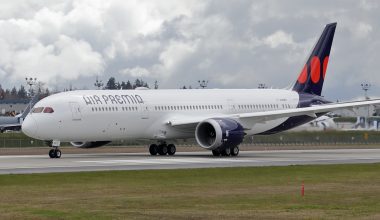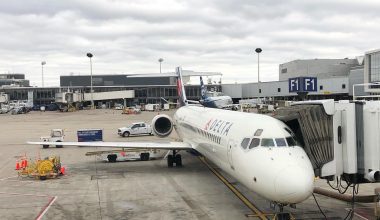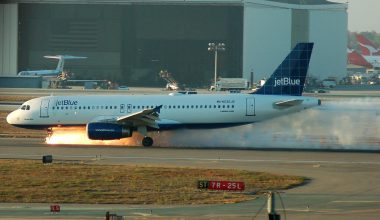It takes an insane amount of engineering to land a space shuttle from space to the runway. Space Shuttle is a retired spacecraft designed to fly in outer space that served as the US vehicle to launch astronauts during its tenure from 1981 to 2011, operated by the National Aeronautics and Space Administration (NASA). This partially reusable launch system accomplished routine transportation for Earth-to-orbit crew and cargo. Carrying up to seven astronauts at a time, the space shuttle took satellites to space for orbiting Earth and large parts to make the International Space Station. The orbiter, external tank, and solid rocket boosters were the parts of this rocket-launched vehicle. This iconic reusable space plane orbited around Earth at the speed of about 17,500 miles per hour.
It won’t be a justice to attribute space shuttle just a mode of transport. In fact, it’s a Spacelab allowing scientists to perform experiments, study science, astronomy, and physics inside a particular module carried on it.

How is space shuttle landing performed?
The angle of entry, piece of materials, onboard computer configuration, flight control software, and other series of precisely-timed steps need to be completed for a successful space shuttle landing. It seems fascinating and straightforward to spot a space shuttle cruise across the runway threshold; getting the space shuttle landing done right is equally complicated.
A few hours until the final touchdown, the space shuttle fires Reaction Control System (RCS) thrusters to provide attitude control during reentry and a backup means of de-orbiting. The mission control center checks and verifies weather safety and gives the traditional ‘go for de-orbit burn’ call once everything is okay for the space shuttle landing procedure.
Spacecraft performs de-orbit burn by turning around and firing the engine facing the direction of travel that slows it down to reduce the orbital altitude. So, its trajectory begins to curve down toward the Earth under a pool of gravity.
The de-orbit burn lowers the orbital speed of the space shuttle enough to lower the orbit. Once the shuttle begins to feel the effects of the atmosphere jostled by forces of reentry, the RCS system is deactivated with an increase in air pressure, and ailerons and elevons start flight control operations.
Atmosphere reentry is the most challenging part of the space shuttle landing as the acceleration undergoes so significant that it puts enormous strain on the aircraft. The immense heat and force caused by a massive amount of drag as the space shuttle experience through Earth’s atmosphere can reach as much a 1648 degrees Celsius.
Also Read: Top 15 largest aircraft ever made
The shuttle’s fast dive through the atmosphere creates a superheated shockwave. As the layer of ionized gas called plasma transfers heat from the shock wave to the shuttle’s skin, Thermal Protection System acts as a barrier. The space shuttle’s Thermal Protection System or heat shield comprises more than 30,000 tiles to protect the space shuttle orbiter during the searing 1650 degree Celsius heat of entry into the atmosphere created by the friction flying at 17500 miles per hour. Several forms of tiles are placed on varying locations, depending on the amount of needed heat protection, which essentially covers the entire orbiter space to protect the spacecraft from becoming engulfed in flames during searing 1650 degree Celsius heat of atmospheric reentry.
When the shuttle re-enters Earth’s atmosphere to land, these tiles throw off intense heat quickly and cool fast enough only a minute later.
During reentry, the space shuttle sends signals back into the space through a small open window to maintain radio contact with the ground captured by Tracking and Data Satellite System.
After the successful atmosphere reentry, the dual delta wings enable the orbiter to glide safely to Earth with just enough lift and no external power. The lifting body design of the orbiter encounters the primary air of the atmosphere. The large swept-back wings exhibit a large lift force that is counteracted by a 60-degree computer guidance sequence pitch to cause the shuttle to plummet into the Earth’s atmosphere.
The lift from wings is strong to cause aircraft to move at a staggering velocity. To achieve a safe level of speed, the counterforce must act to tilt the shuttle onto its side, causing the direction of lift perpendicular to the ground. The Space Shuttle should rotate 180 degrees to change the direction of the force in the opposite direction.
A few minutes from the final touchdown or space shuttle landing, the space shuttle emits two thunderous sonic booms as the orbiter slices through the atmosphere, which gets louder as the orbiter drops in altitude.
The space shuttle reaches supersonic speed before circling for a landing approach. Until the space shuttle straightens out 20 km from the runway, it should constantly maneuver, finally permitting the commander to line up the module and drop the gears. Eventually, the shuttle lifts up its nose, deploys landing gear. While performing the final approach, the commander must be careful not to open gears too soon, or the drag created can cause the shuttle to stall or plummet to the Earth, causing disastrous failure.
The orbiter’s speed is still 350 km per hour when rear wheels touch the runway. The nose gear hovers swiftly off the runway to slow the rate of descent, eases onto the floor, speed brake on the tail, and the parachute cut loose to increase the drag to help the vehicle finally roll to a stop about midway to three-quarters of the way down the tarmac.
How does the space shuttle take off?
There must be a scientific mechanism for the space shuttle to launch into the air or be pretty fast to make it into orbit. The main engines of the space shuttle and two solid boosters provide about 7.8 million pounds of thrust needed to launch a shuttle into the air with an incredibly high speed. As fuel is guzzled at an alarming rate, the shuttle lifts off rapidly to attain an enormous velocity of 1000 mph. The space shuttle doesn’t take off like airplanes as shuttle operators use large external hydrogen tanks and fuel boosters to get out of the atmosphere in a matter of seconds as not to make launching unviable, both technically and financially.

Airports for the Space Shuttle landing
The space shuttle can’t land at every airport like other average aircraft as it requires runways of sufficient length for slowing down. NASA’s Kennedy Space Center in Florida and Edwards Air Force Space in California are well-known landing sites for returning space shuttle orbiters.
- Kennedy Space Center
The single concrete runway of Kennedy Space Center is designed to accommodate orbiter landings. Opened initially for flights in 1976, the shuttle landing facility has a 4,572 m long, 40.6 cm thick runway (in the middle) which is comparatively longer and broader than most runways in the world.
- Edwards Air Force Base
Edwards Air Force Base had nine runways to serve as a backup site for the Space Shuttle landing. Although 59 missions have landed on this base, Kennedy Space Center is the most preferred site for the orbiter.
- White Sands Space Harbor
The space shuttle Columbia once made an emergency landing at White Sands Harbor Runway 17 in 1982 due to flooding at Edwards Air Force Base. The dry lakebed runway that acted as a backup hasn’t seen any shuttle landing after 1991.
- Transoceanic Abort Landing Sites such as Naval Air Station Bermuda, Lajes Air Base in Spain, Istres Air Base in France feature runways of sufficient length to aid landing in the event of an abort during launch.
- East Coast Abort Landing Sites like Miami airport, Plattsburgh Airport, Francis S. Gabreski Airport, Naval Air Station Oceana, Dover Air Force Base and Myrtle Beach Airport, etc., permit landings in certain launch abort situations.
Space Shuttle Orbiters
Columbia, Challenger, Discovery, Atlantis, and Endeavor were five space shuttle orbiters with an airplane-like design with a fuselage and two double delta wings, capable of launching like a rocket and could rendezvous and dock precisely. Having a size of about 37.1 meters and a wingspan of 23.8 meters, these orbiters were empowered to conduct scientific research, including biotechnology and radar mapping, deploy commercial, military, and scientific payloads, etc. 135 missions were flown throughout the space shuttle program from Kennedy Space Center over 30 years. The fantastic set of accomplishments racked by the era of the NASA space shuttle is historic and worth the total cost of $209 billion incurred from development through its retirement.

Space shuttle development- and achievement like no other
The space shuttle is the marvel of human engineering, leading to an outstanding achievement in human history that built the foundation for unlocking the universe’s secrets. It is the most significant leap forward in deep space exploration that propelled mission to space, pushed the forefront of space, and enhanced human knowledge beyond the Earth’s bounds.






